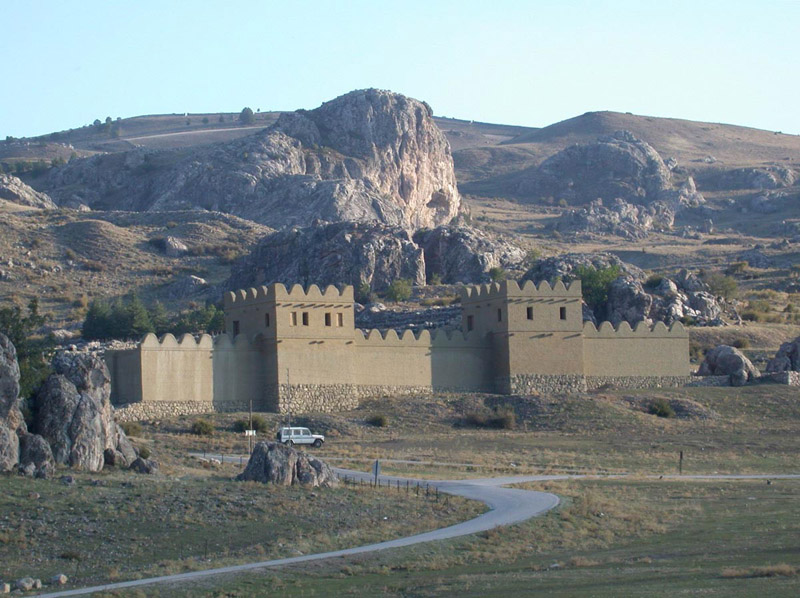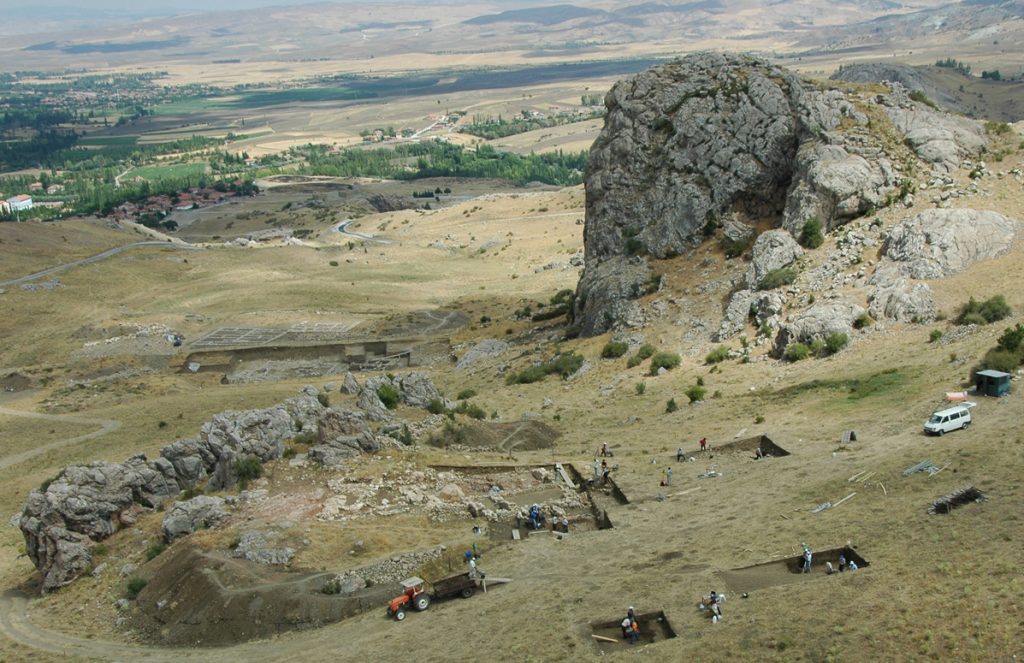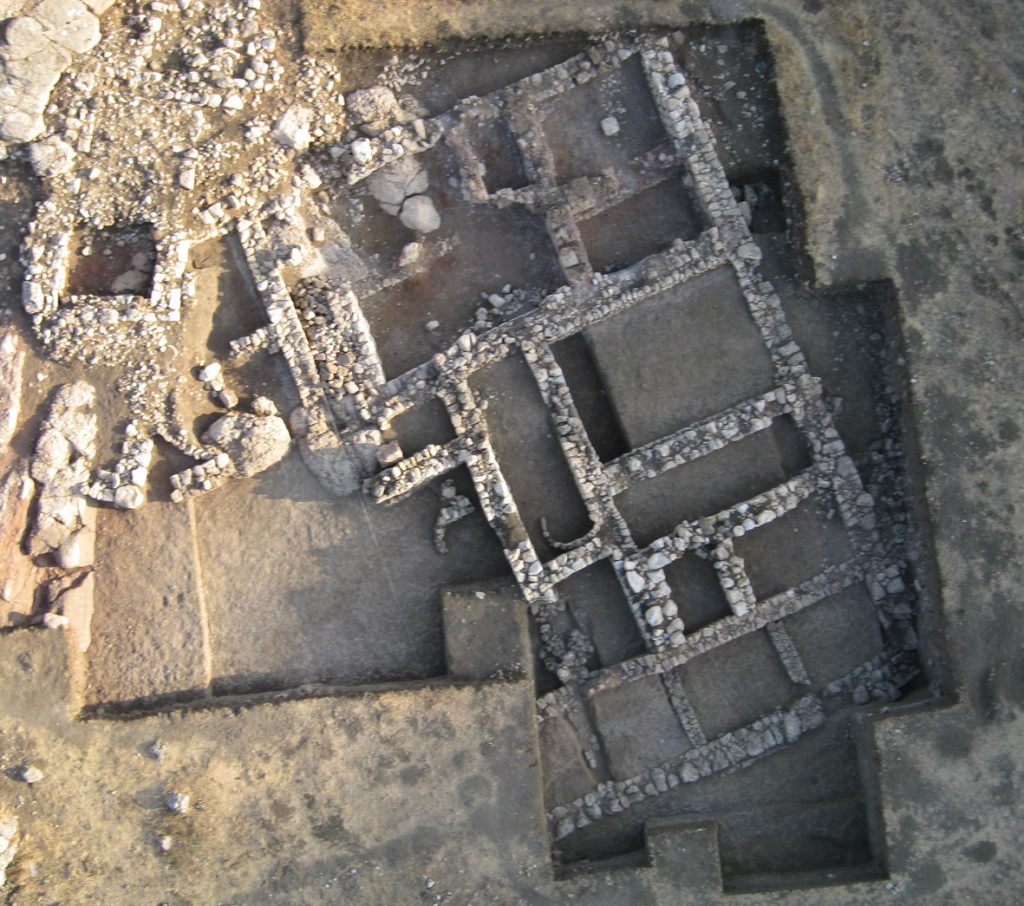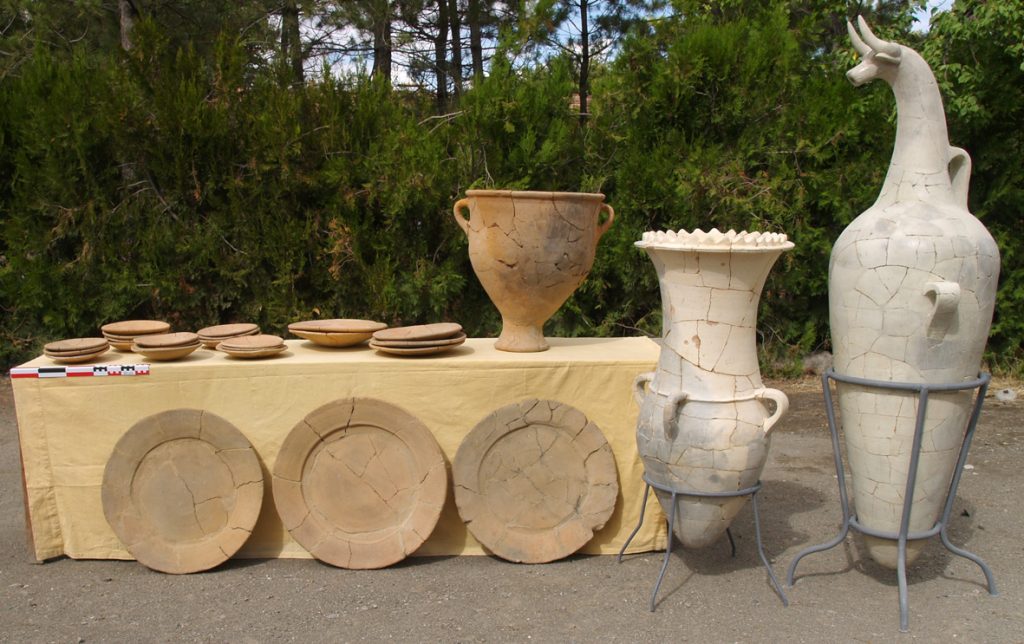For more than 100 years, researchers from the German Archaeological Institute have conducted excavations in the ruined city of Hattusa on the Anatolian plateau. During the archaeological work, unique monuments of Hittite art and architecture were unearthed. These include the nine-kilometer-long walls with their impressive gates and the rich cuneiform tablet archives. These textual sources allowed Hattusa to be identified as the capital of the Hittite Empire. The cuneiform texts reflect the eventful history of the city, which reached its peak between the 14th and 13th centuries BC.

During research around the upper town, numerous temple buildings were identified which impressively underscore the importance of the “City of a Thousand Gods” as a center of Hittite religious worship. The remains of the royal fortress of Hattusa were discovered on the rocky massif of Büyükkale (“Great Fortress”). Surrounded by a protective wall, the fortress complex consists of interconnected courtyards, archives, residences, and religious buildings. The residence also housed the two-story clay tablet library.
The study of the cuneiform tablets of Hattusa, which so far number around 33,000 tablets, has led to the emergence of Hittitology as a philological discipline. The research in Hattusa created a basic understanding of Hittite religion, politics, historical geography, and various aspects of life in the Ancient Near East. Since 1986, Hattusa has been a UNESCO World Heritage Site and offers travelers unique insights into Hittite history.

Excavation area in the western part of the Upper City (Photo: A. Schachner, DAI) 
Aerial view of a Hittite villa (?) of the 15th – 13th cent. BC (Photo: A. Schachner, DAI) 
Aerial view of a Hittite villa (?) of the 15th – 13th cent. BC (Photo: A. Schachner, DAI)